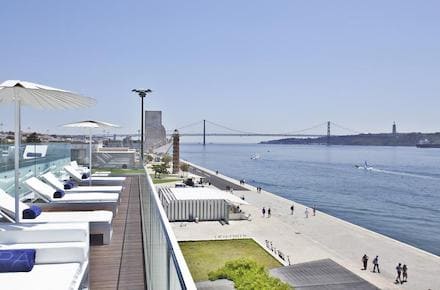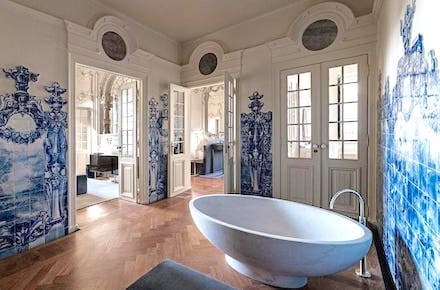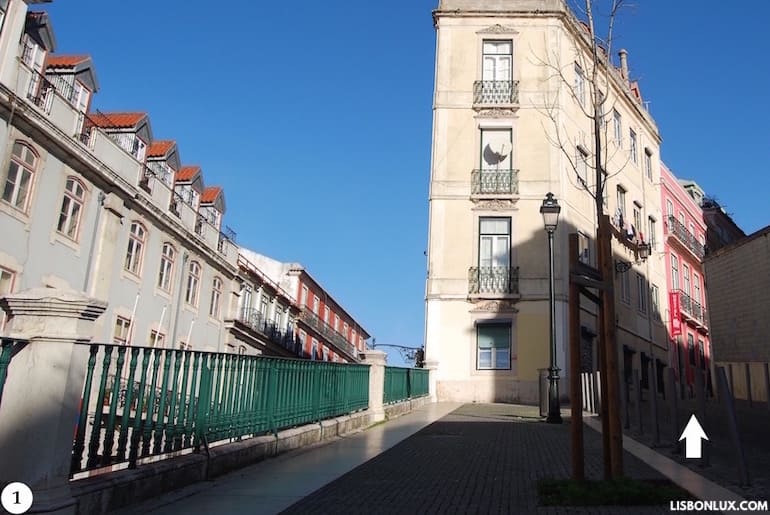
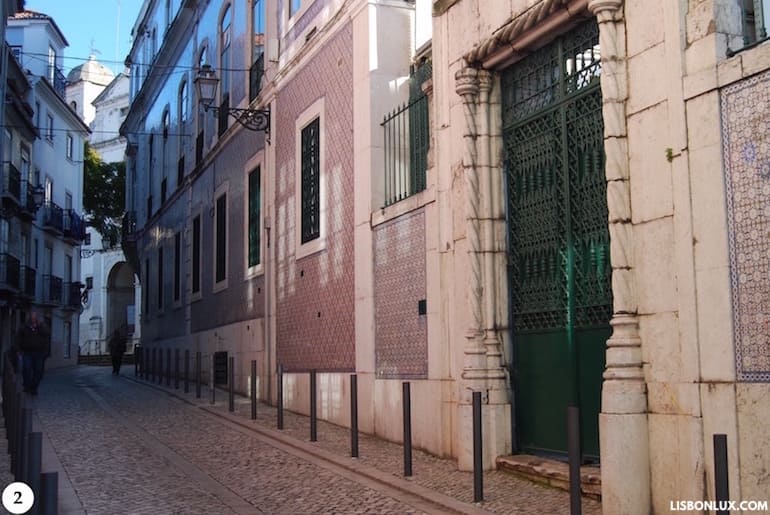
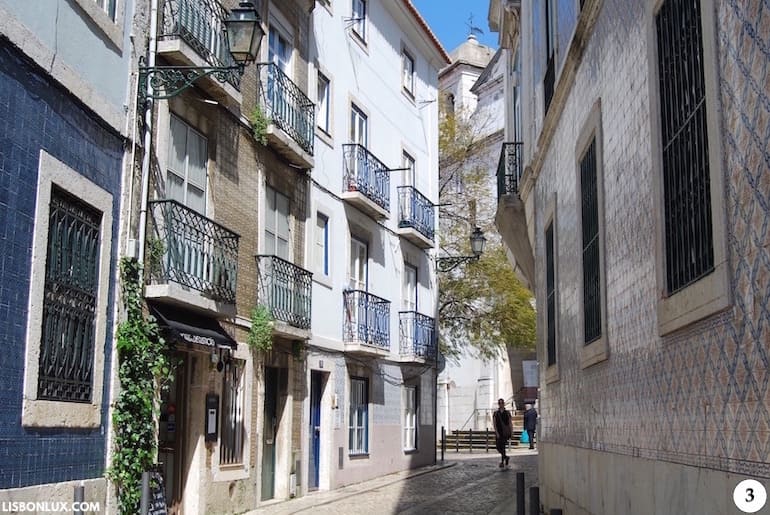
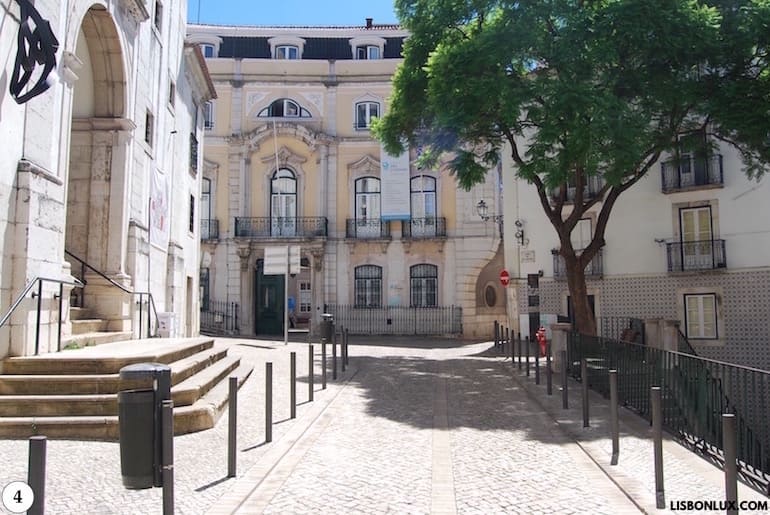
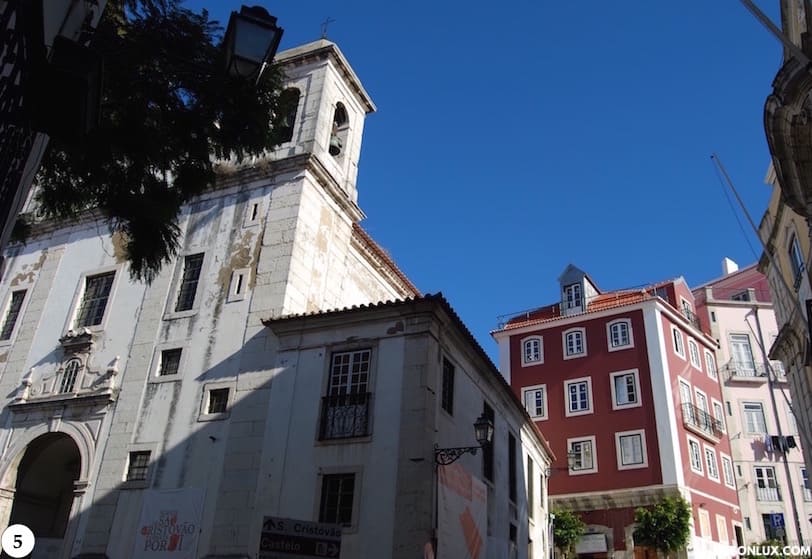
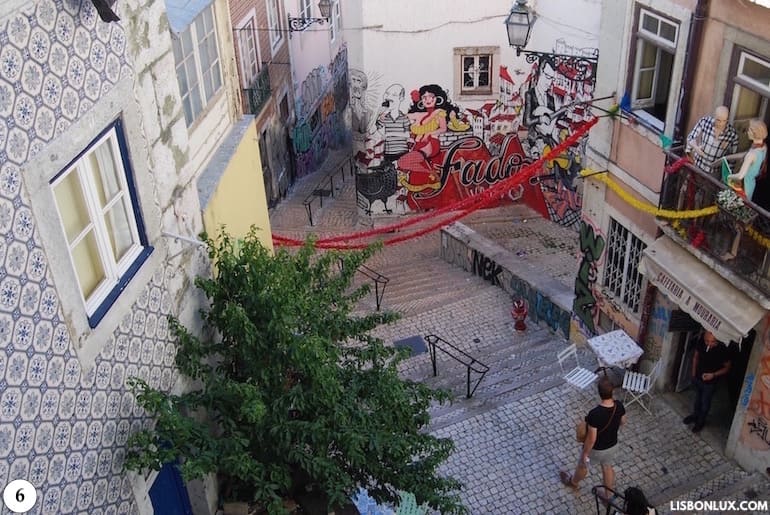
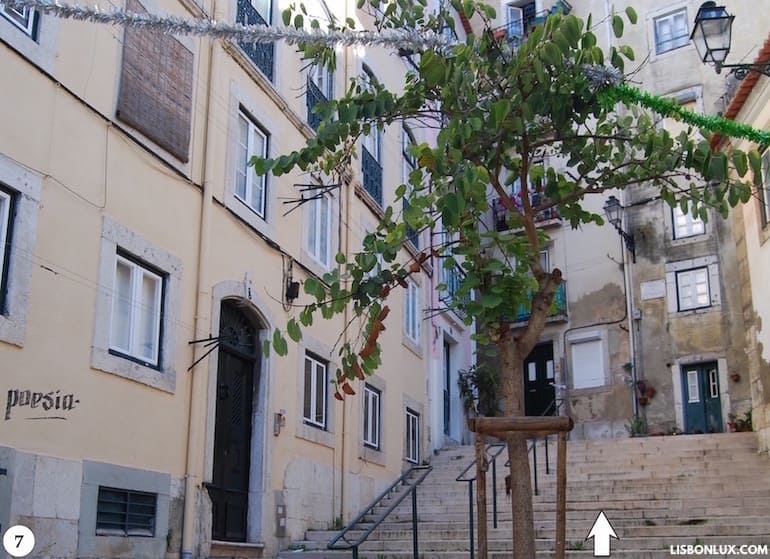
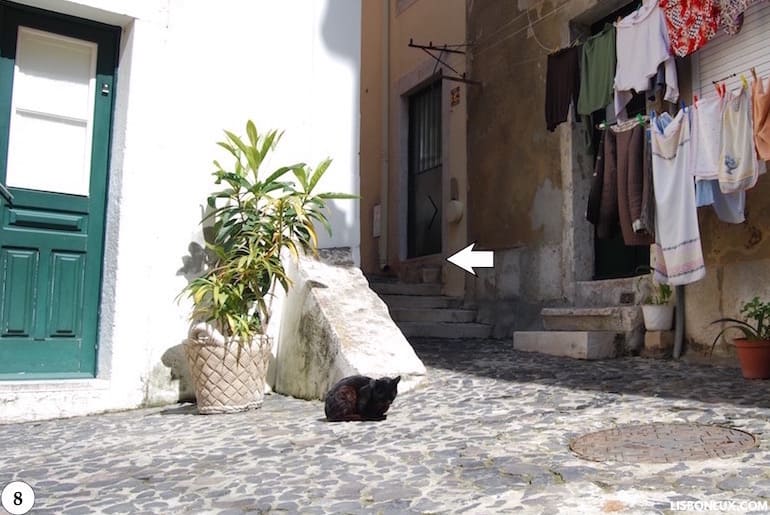
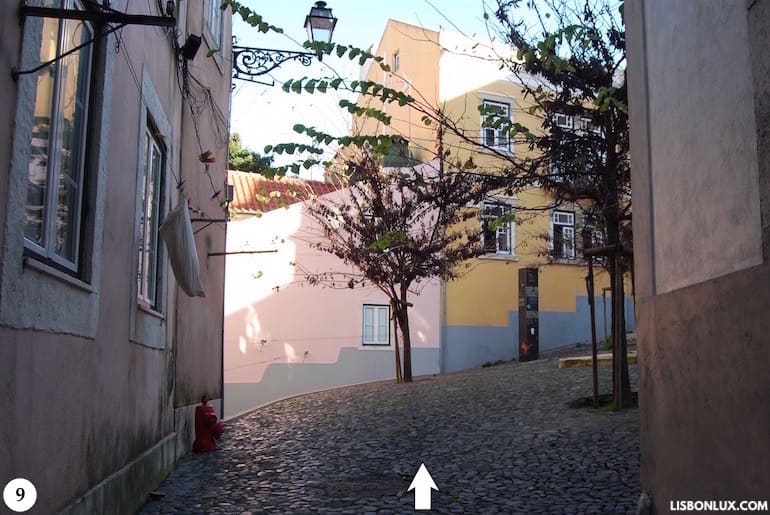
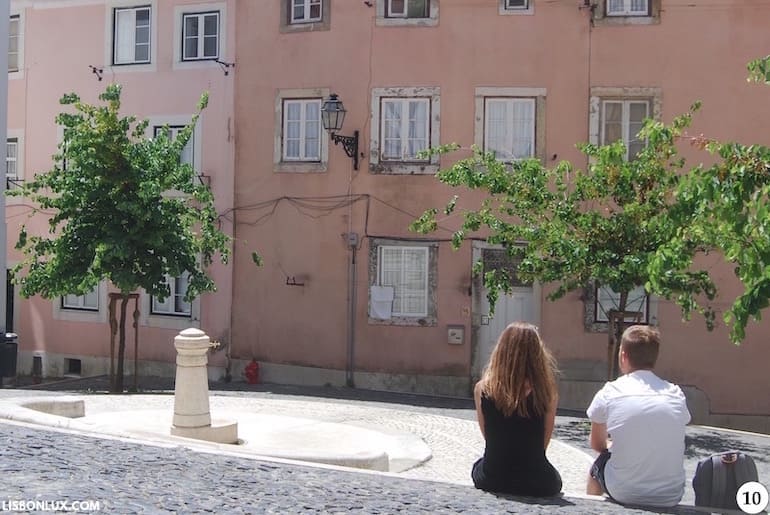
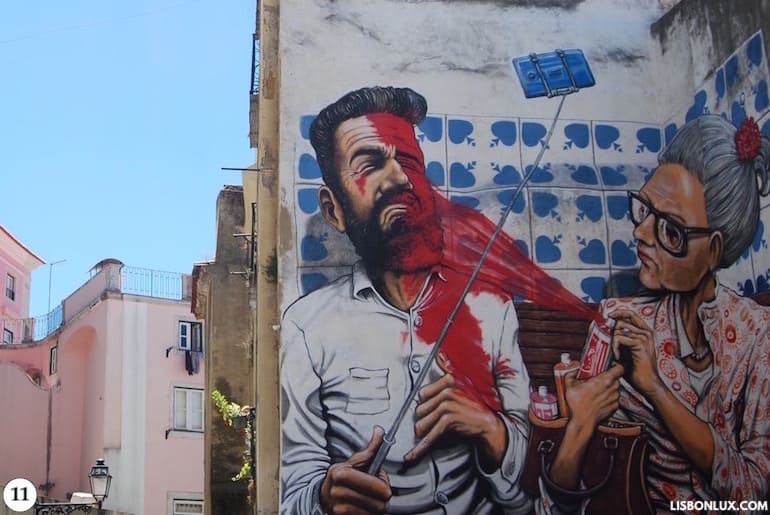
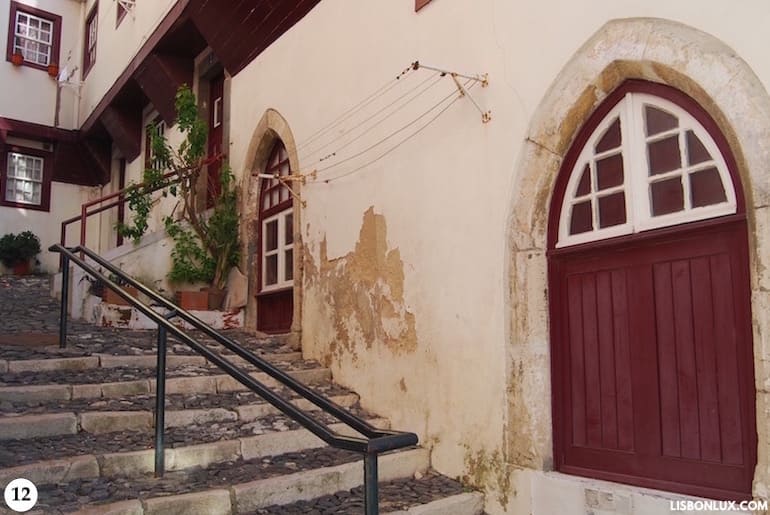
Start on Rua do Regedor (1), by Rua da Madalena. You will see a Manueline portal (2) which gave access to a palace where Eleanor of Portugal, daughter of King Duarte, was married to Frederick III of Germany in 1452. Walking past tile-covered façades (3), you arrive at Largo de São Cristóvão (4), site of St. Christopher’s Church (5) and where you see a mural paying tribute to fado music, created in 2012 down Escadinhas de São Cristóvão (6). Turning right around the church, up the steps of Beco de São Francisco (7), and turning left (8), you reach Largo da Achada (9), with its small drinking fountain (10) and a piece of street art by Italian artist Andrea Tarli (11). It’s also here that you find one of the city’s oldest houses, dating from the 1500s and still with its curious gothic windows (12).
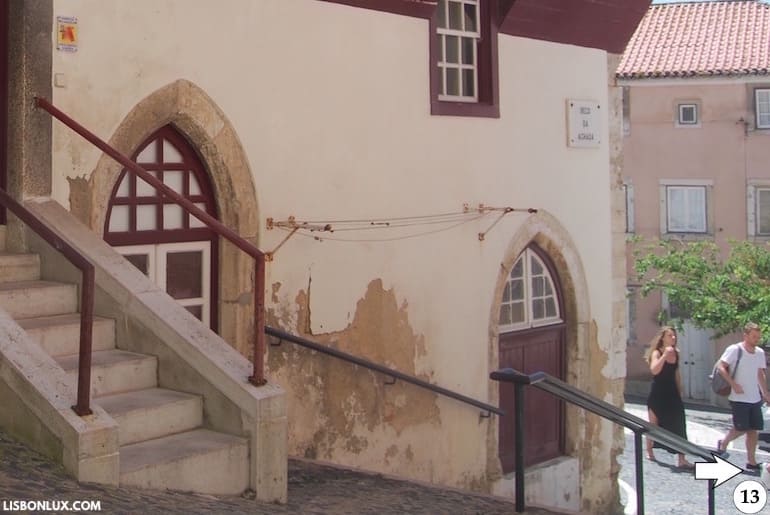
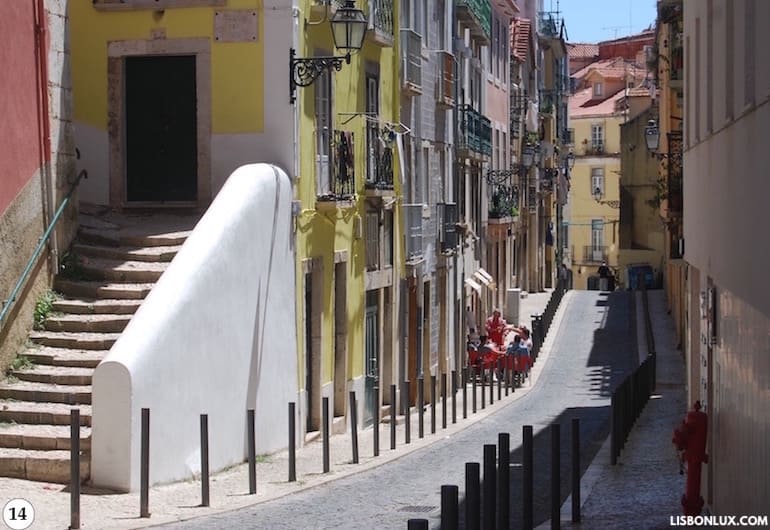
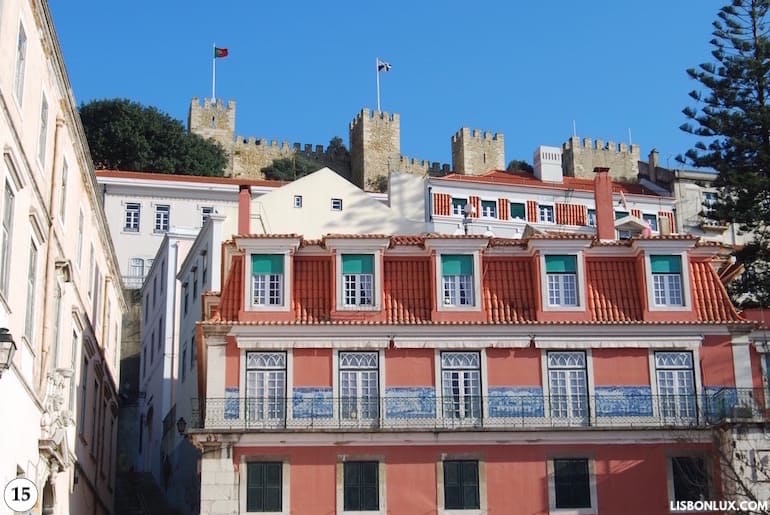
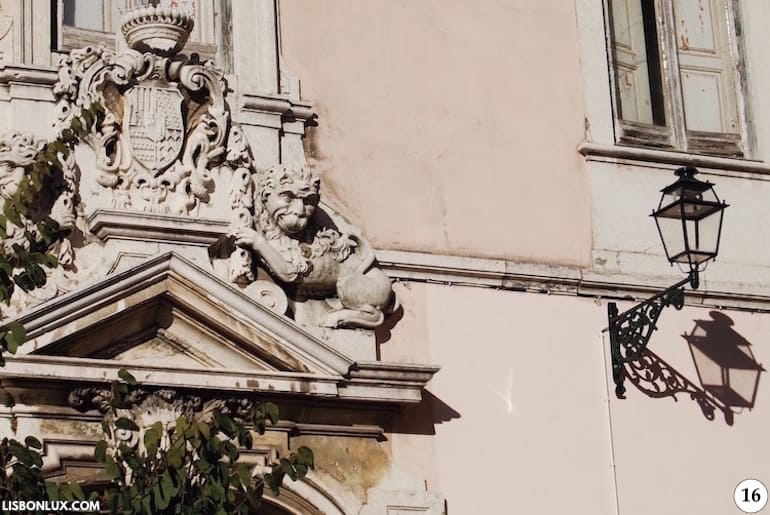
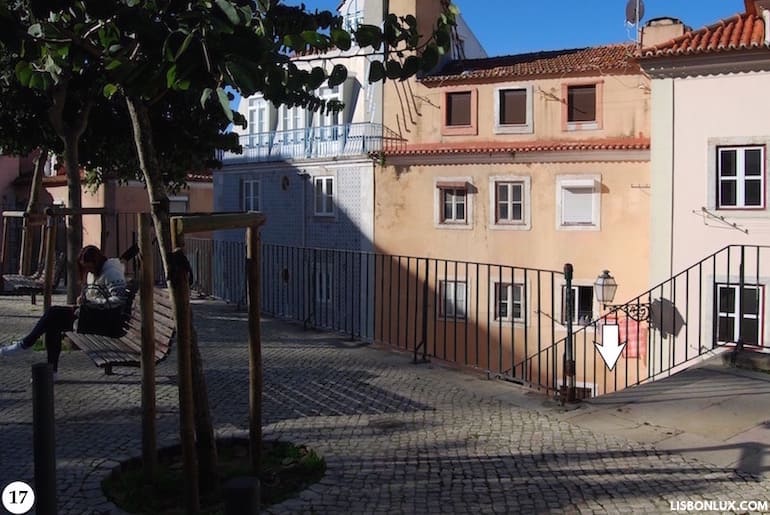
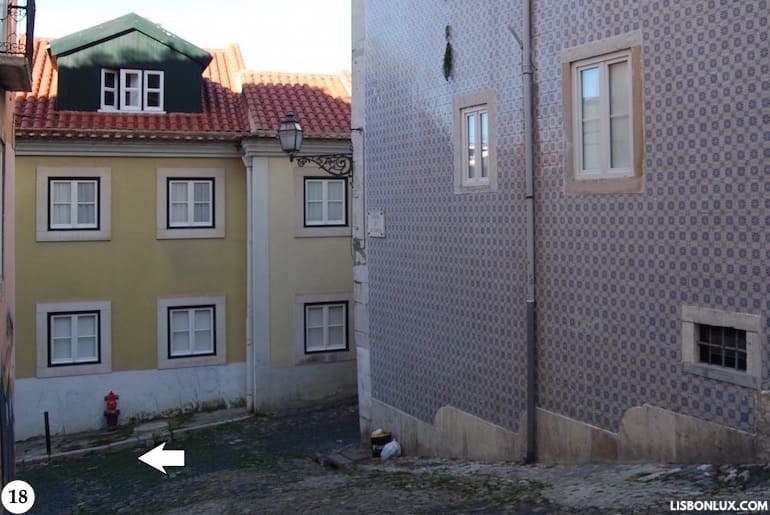
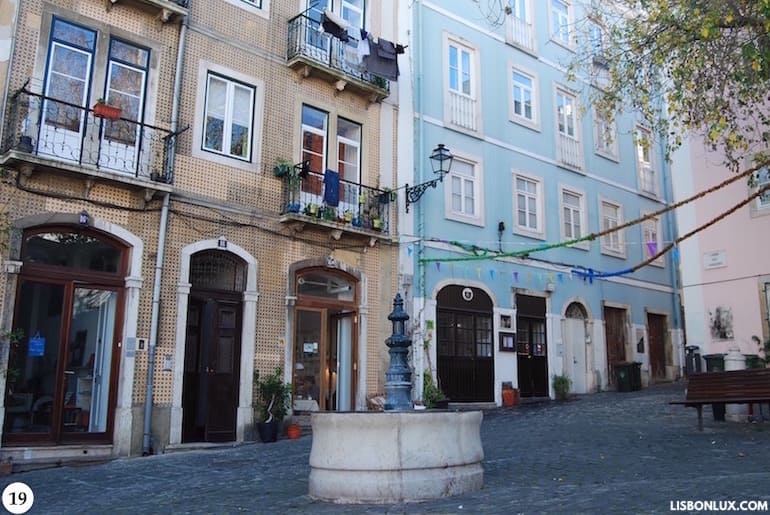
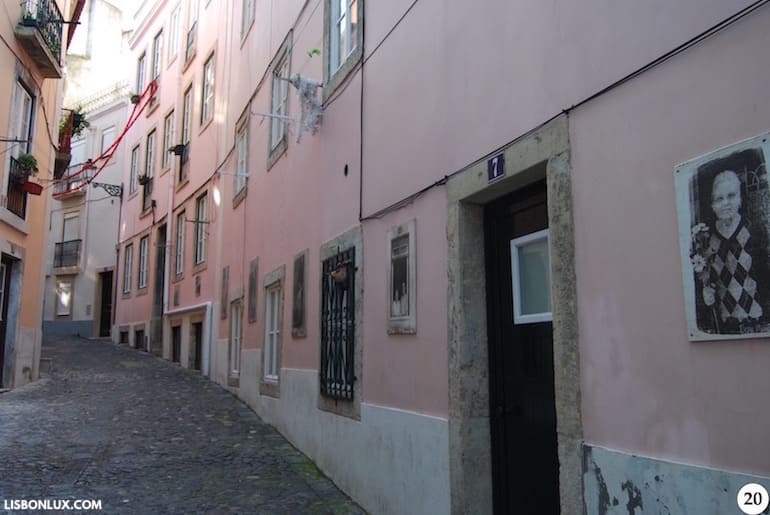
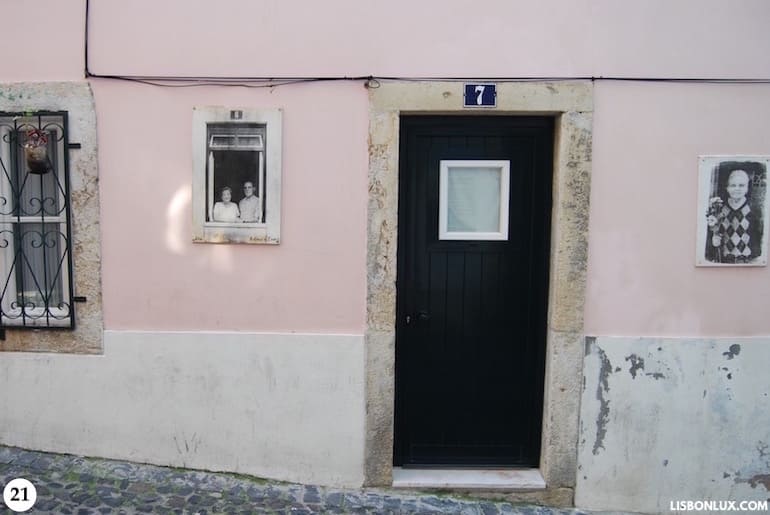
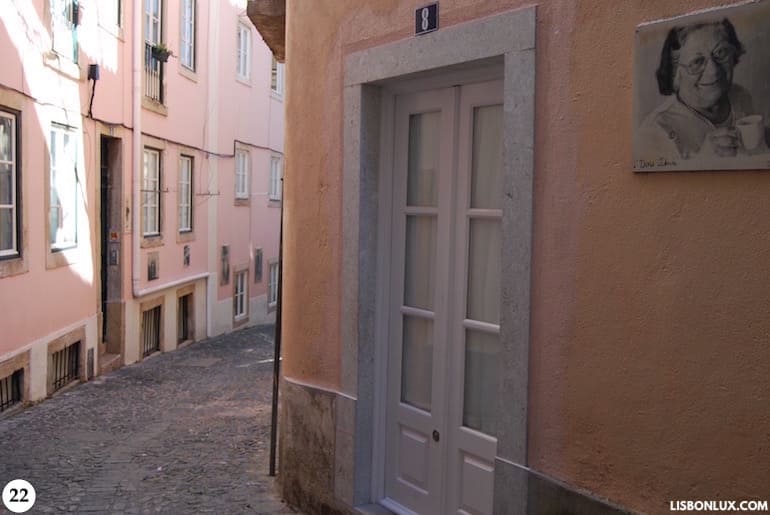
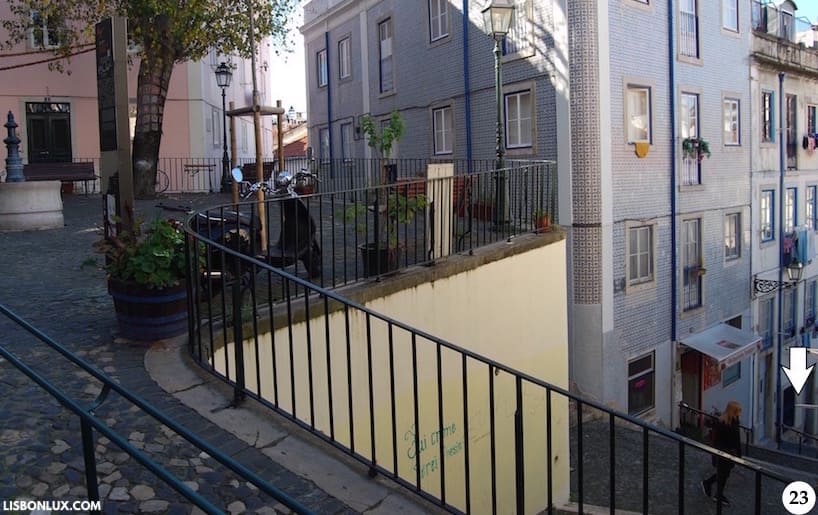
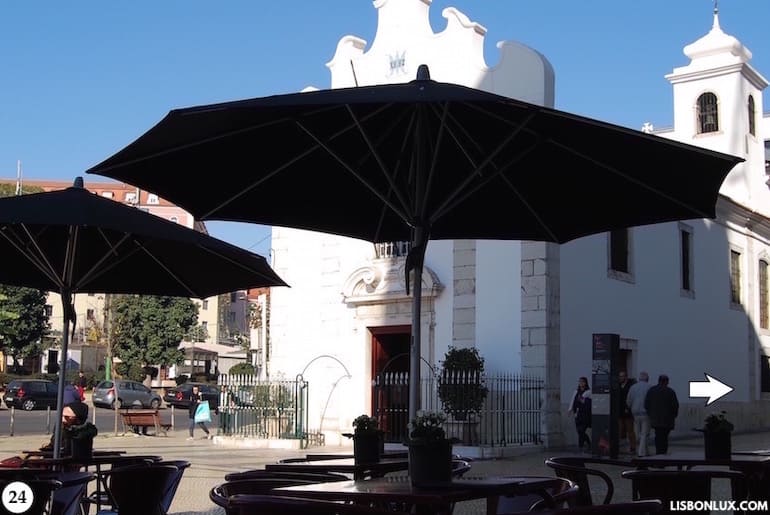
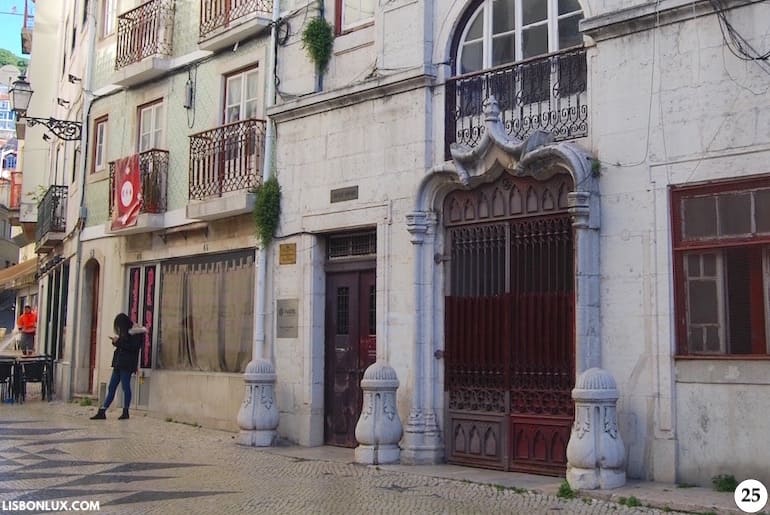
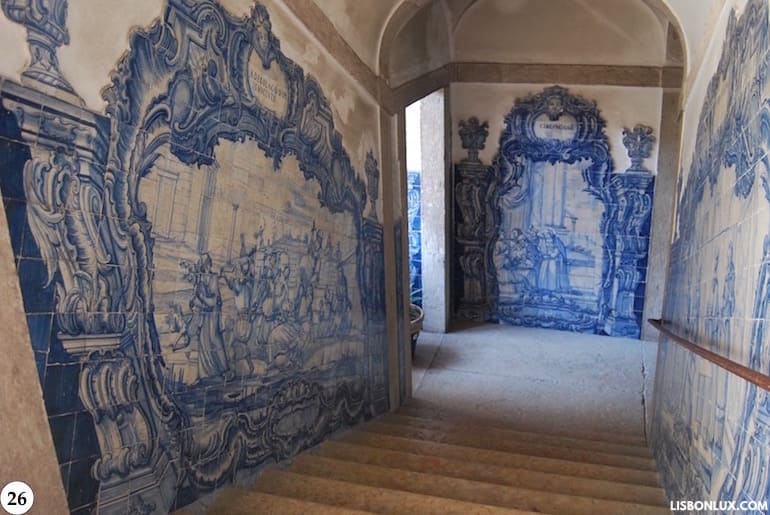
Continue down Rua da Achada (13), and take the steps down Beco das Flores, which take you to Rua das Farinhas. Turn right, and Rua das Farinhas (14) ends at Largo da Rosa (15). Here you can see the castle and find the 17th-century Palácio da Rosa (16) next to the church of St. Lawrence. The Church is not open to the public, and the palace is said to be in the process of becoming a hotel. Going down the stairs across from the church (17) and going around a tile-covered building on Calçada de São Lourenço (18) you reach the narrow Rua de São Lourenço, where you turn left. At the end of the street you arrive at the calm Largo dos Trigueiros (19), where the only thing you hear in the morning is the sound of the water of its small fountain. This is where you step into an open-air gallery, with several portraits of the neighborhood’s old residents on the façades, a tribute by British photographer Camilla Watson, who has her studio nearby. See some of the portraits on Beco das Farinhas (20) (21) (22), and return to Largo dos Trigueiros. Go down the stairs (23) to Rua do Arco do Marquês de Alegrete and head right towards Martim Moniz Square, where you find the small Church of Our Lady of Good Health (24). A few steps further is a Manueline portal (25) that was part of the old Colégio dos Meninos Órfãos, a charity house from 1549. It’s closed, but it hides a remarkable set of tile panels from the 1700s with scenes from the Old and the New Testament (26), which can only be seen on rare guided tours.
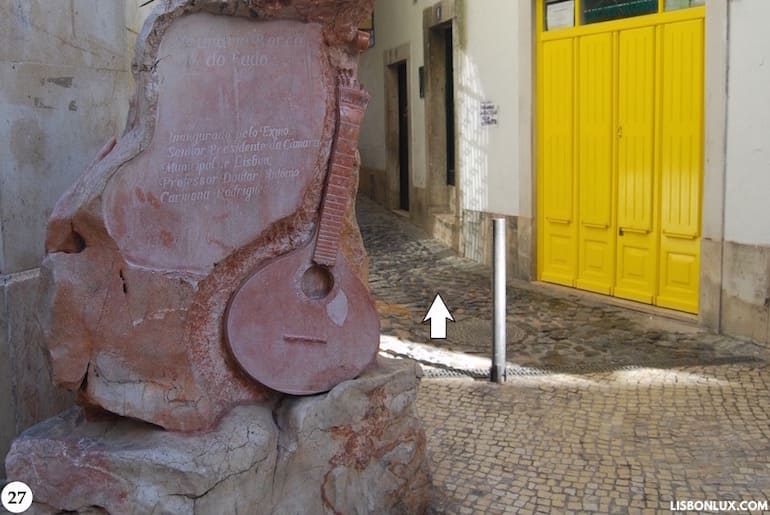
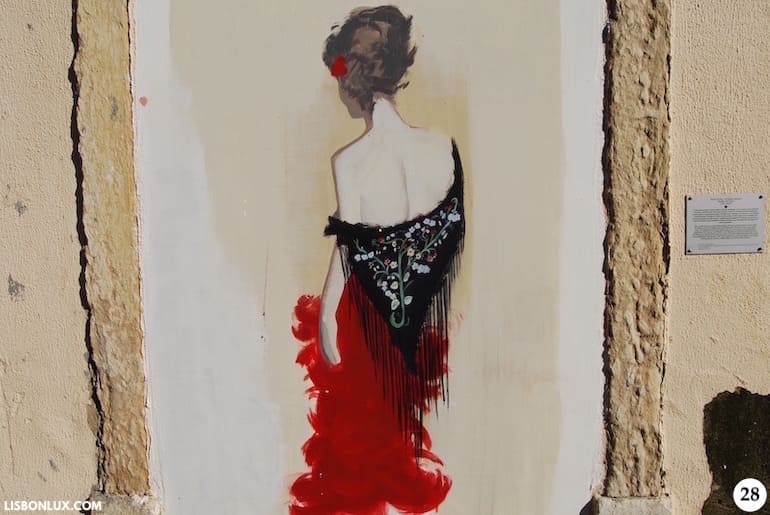
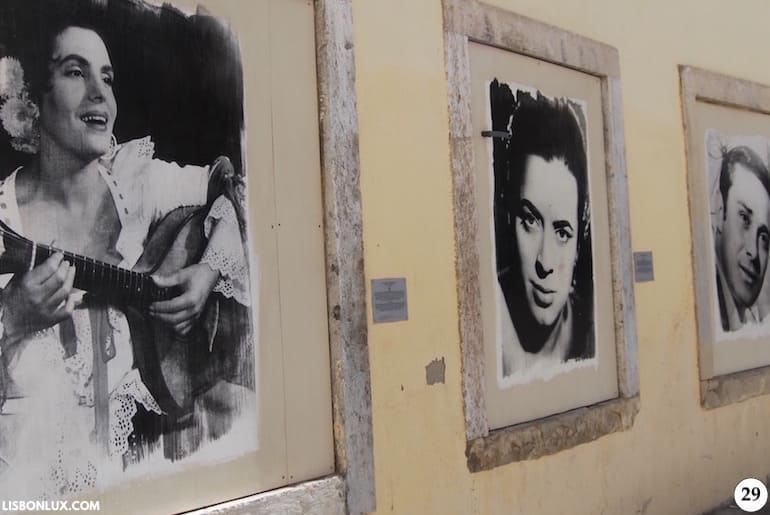
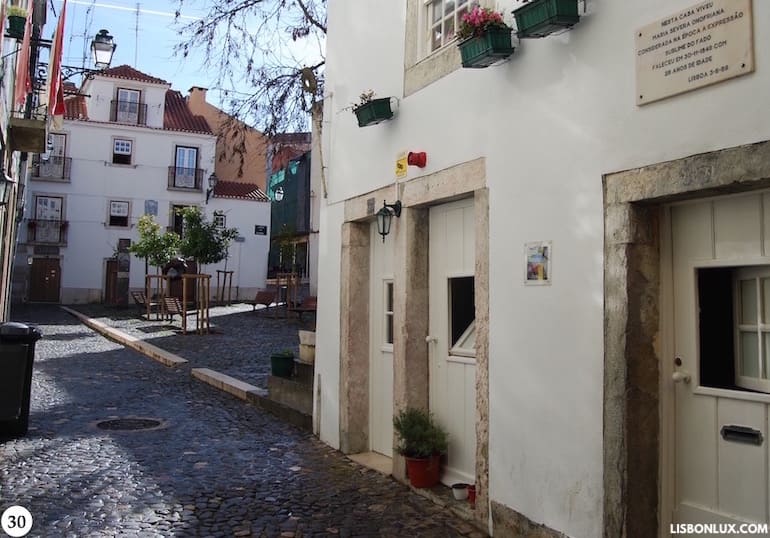
A few steps away is Rua do Capelão, a street known as "the street of fado," with a Portuguese guitar carved on a block of marble honoring Mouraria as the cradle of Lisbon’s traditional music (27). Down Rua do Capelão is another open-air gallery, this time showing "Portraits of Fado" celebrating the voices that were born, raised or that sang in Mouraria, from Maria Severa (28) to Amália Rodrigues and her contemporaries (29). It’s also where you find Casa da Severa (30), the house where singer Maria Severa Onofriana was born and lived, recently renovated and now a stage for fado nights. It faces the picturesque Largo da Severa, the center of a neighborhood that escaped the 1755 earthquake.
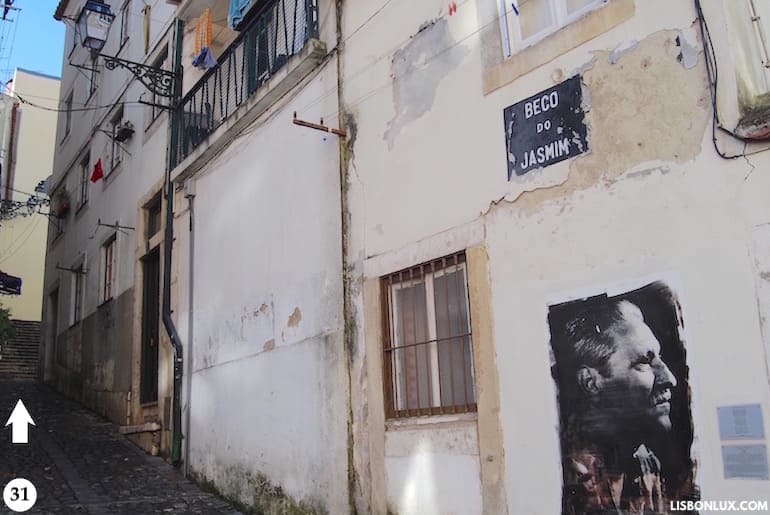
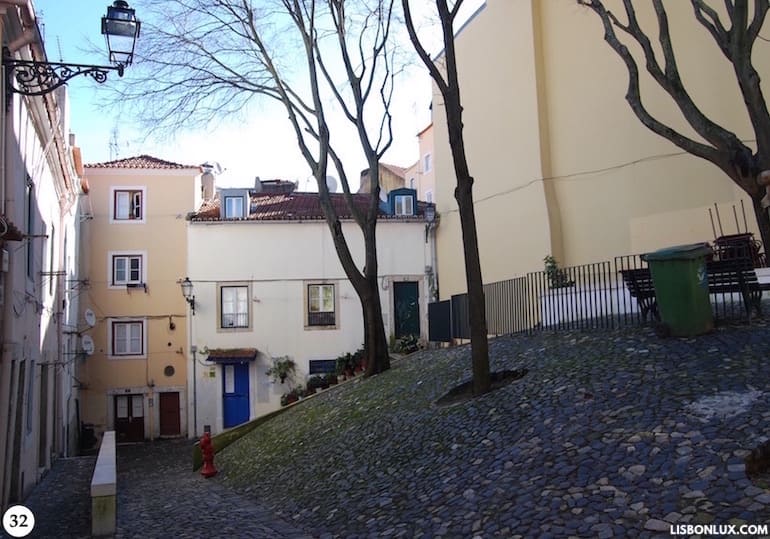
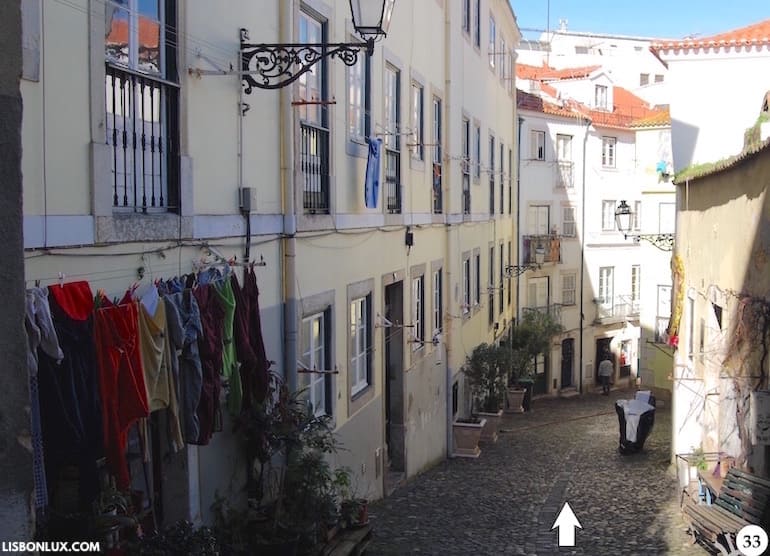
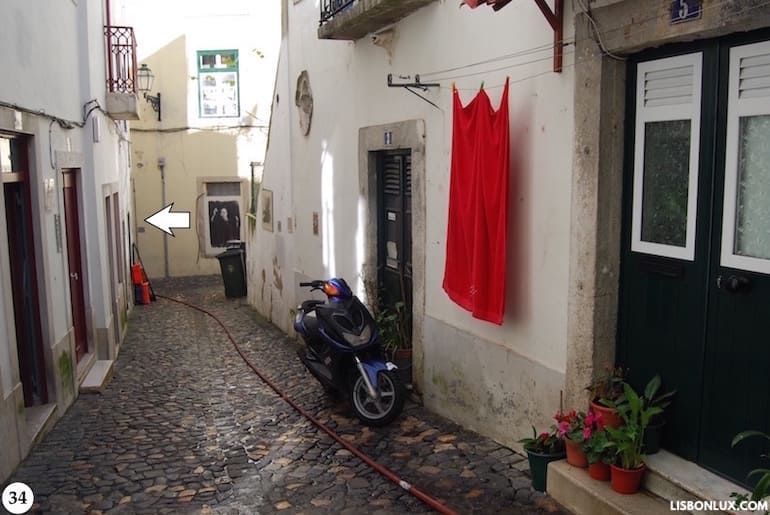
Turn to Beco do Jasmim (31), where you reach another picturesque corner (32). Turning right, you arrive at Rua João do Outeiro (33), where you find one of the city’s most traditional restaurants, the popular Zé da Mouraria, which only opens for lunch. A few feet away is Casa Fernando Maurício, a small museum inaugurated in 2015, dedicated to fado singer Fernando Maurício, known as the "King of Mouraria" and the second most popular personality in the neighborhood after Maria Severa. With only three rooms, the museum celebrates the life of the singer through his personal objects, awards, photographs and recordings.
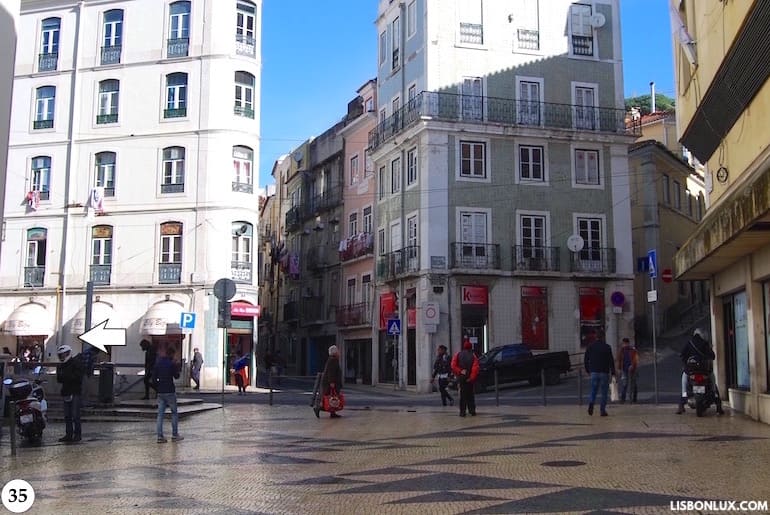
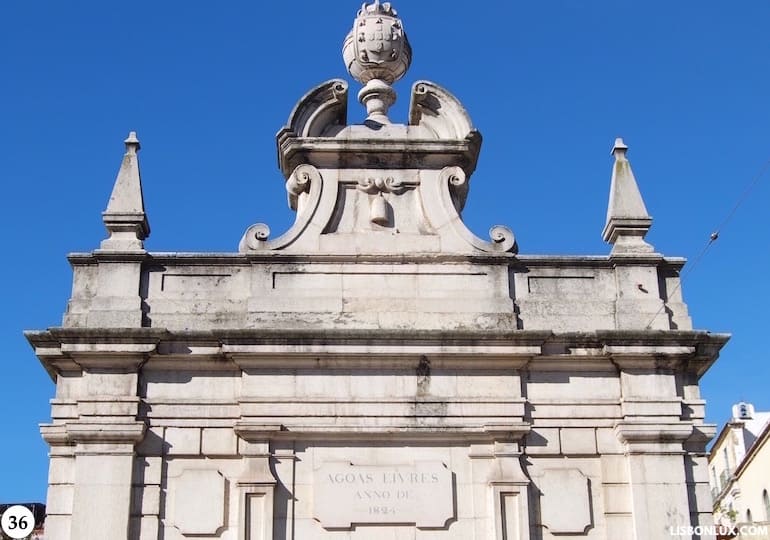
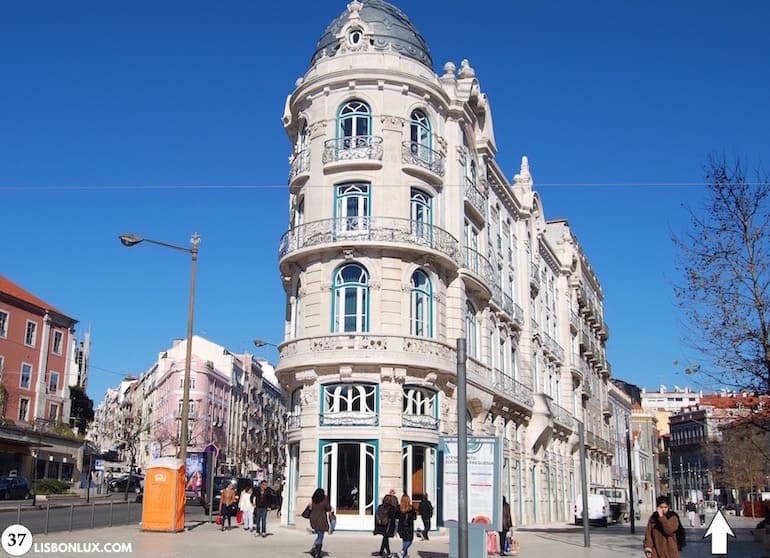
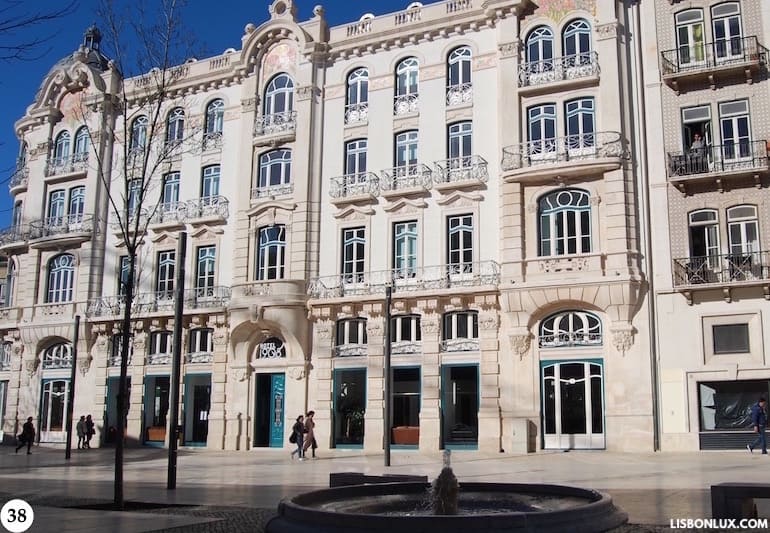
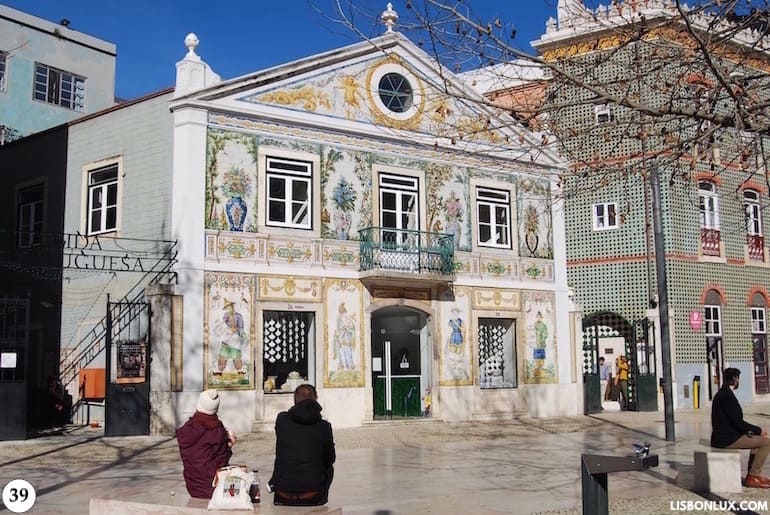
Turning left (34), you return to Rua da Mouraria, where you turn right and then left towards Martim Moniz Square (35), and follow the busy Rua da Palma on the right. Here you step into a small "Chinatown," and find one of the several monumental drinking fountains in the city, this one built in 1824 in neoclassical style, and crowned by an armillary sphere (36). Almost directly across the street is one of the city’s most beautiful buildings, dating from 1908 and now a hotel (37). It’s a building that marks the entrance to Largo do Intendente (38), a square known for its iconic tile-covered façade (39). Next door is the beautiful A Vida Portuguesa store, full of "made in Portugal" products.
